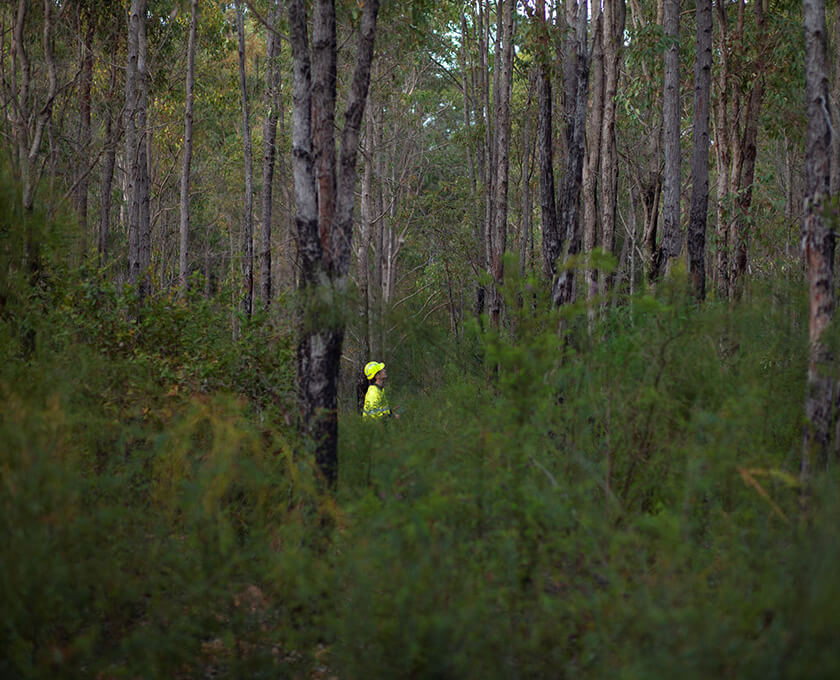November 28, 2023
Alcoa continues successful rehabilitation of jarrah forest ecosystem

Alcoa has a successful record of rehabilitating the jarrah forest in the areas where we have mined.
More than 75 per cent of the areas cleared for bauxite mining in WA have been rehabilitated and are at different stages of development. This work is ongoing. The goal of this rehabilitation is to restore a self-sustaining jarrah forest ecosystem.
Alcoa does not mine in old growth forest or national parks. All areas mined have been previously logged, at least once.
Alcoa is one of very few mining companies in WA to have handed back rehabilitated land to the State.
To date, the company has handed back two areas totalling 1355 hectares at the previous Jarrahdale mine, for which Alcoa has received two Certificates of Acceptance from the State stating the areas met appropriate criteria for completed rehabilitation.
This was the first significant area of mining rehabilitation to be submitted for and receive a Certificate of Acceptance in Australia. The full closure of Jarrahdale mine was recognised with a State Golden Gecko Award for environmental excellence in 2007.
Alcoa also is the first mining company to receive recognition from the United Nations for rehabilitation excellence.
Many of the areas rehabilitated that are yet to be handed back to the State support self-sustaining forest ecosystems. Some also provide valuable forest recreation areas.
Alcoa believes forwarding mature areas of rehabilitation for final sign-off by the State is the best approach as this provides confidence in its success and resilience through evidence of sustained growth and development. As natural growth processes take many years, this approach is one reason why only limited areas have been formally handed back, though many more are nearing this point.
Rehabilitation is delivered in accordance with the government’s required criteria of the day, something that has evolved in line with scientific advances over the years. Prior to 1988, the requirement was to plant introduced trees such as Eastern States eucalypt species with a view to supporting a local timber industry.
Alcoa has undertaken significant research and development work since the 1970s to enable successful reestablishment of Northern Jarrah Forest endemic species. In 1988, we moved to using entirely native species in our rehabilitation. Our goal is to return on average the same number of plant species in rehabilitated areas when compared to the surrounding reference forest, and this is measured 15 months after establishment. We first achieved that 100 per cent species richness return in 2001.
The earliest jarrah trees used in our rehabilitation around Jarrahdale were planted in 1971. Growth rates and establishment success of native species over the decades reflect what is observed in surrounding unmined forest.
Alcoa uses a carefully researched and managed multi-step process to rehabilitate mined land. These rehabilitated areas contain a rich mix of plant species, including ground layer, mid-strata and canopy layers that are important to the function of the jarrah forest.
The company works closely with the Department of Biodiversity, Conservation and Attractions on appropriate forest management as it progresses plans to accelerate future handback.
Published peer-reviewed research on fauna recolonisation of rehabilitated areas has reported the return of 100 per cent of mammals, and around 90 per cent of birds and reptile species, including several endangered or threatened species. Research to improve the recovery of suitable habitat for all species is ongoing.
Alcoa is acutely aware of the need to balance environmental, social and economic factors. Aluminium is essential for a renewable future and forecasts indicate an additional 30-40% of the metal being required by 2030.
Alcoa also directly employs 4850 Australians, supports around 1560 Australian businesses, and provided $4.9 million in community investment in 2022.
As we move forward, Alcoa will maintain its focus on continuous improvement of rehabilitation efforts to ensure ongoing success and restoration of the jarrah forest ecosystem for future generations to enjoy.